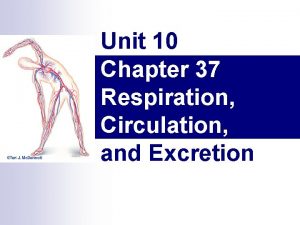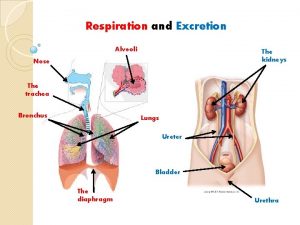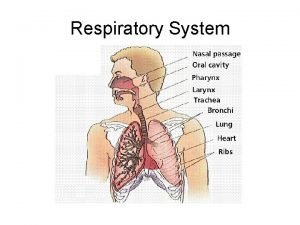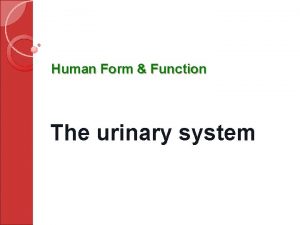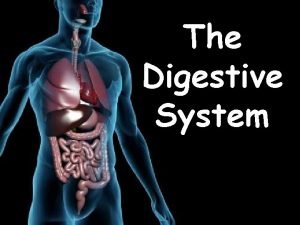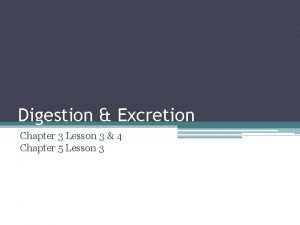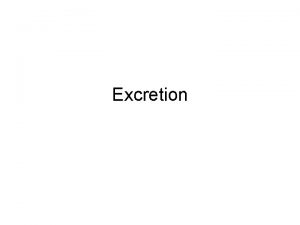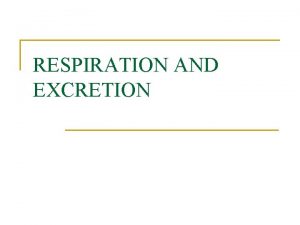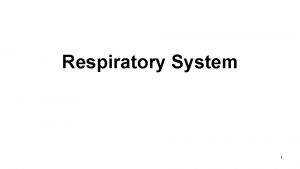Respiration and Excretion Respiration The Respiratory System A









- Slides: 9

Respiration and Excretion

Respiration The Respiratory System A. Functions of the respiratory supply oxygen to the body. 1. Breathing is the movement of the chest that brings air into the lungs and removes waste gases. 2. Cellular respiration oxygen is used by the cells to release energy from glucose. 3. The waste products of cellular respiration are carbon dioxide and water.

Respiratory System B. Organ of the respiratory system 1. The pharynx is a tubelike passageway used by food, liquid, and air; lower end has a tissue flap called the epiglottis, to prevent food or liquid from entering the airway. 2. Air passes through the larynx, which contains the vocal cords used to speak. 3. Trachea- tube held open by rings of cartilage; lined with cilia and mucus membranes. Respiration Diagram

Respiratory System Organs of the respiratory system continues 4. At the lower end of the trachea, two short tubes called bronchi branch into tubes. 5. Smaller tubes are bronchioles, which end in clusters of alveoli. 6. The alveoli are surrounded by capillaries. This is where oxygen enters the blood and waste products exit the blood.

Respiration C. Why do you breathe? 1. Signals from your brain tell muscles in your chest and abdomen to contract and relax. a. If carbon dioxide levels in the blood increase, your breathing rate increases. b. If carbon dioxide levels decrease, breathing rate decreases. 2. Diaphragm muscle that contracts and relaxes to move gas into and out of the lungs. Inhale and Exhale

Respiratory System D. Diseases and Disorders 1. Respiratory infections – colds , the flu, pneumonia 2. Chronic bronchitis – bronchial tubes become irritated and swell; too much mucus is produced; excess coughing can damage cilia, form scar tissue, and reduce respiratory system Bronchitis

Respiratory System Continues Disease and Disorder 3. Emphysema – disease of the alveoli, which enlarge and fail to function effectively a. Causes shortness of breath b. Can often lead to heart problems. Emphysema

Respiratory System Continues Disease and Disorder 4. Lung cancer – uncontrolled cell growth in lung tissue a. Smoking is the greatest contributing factor b. Tar and other ingredients in smoke are carcinogens. Diseases and Disorder Diagram

Respiratory System Continue disorders 5. Asthma- disorder in which bronchial tubes contract quickly ; causing shortness of breath Asthma Diagram
 Chapter 37 respiration circulation and excretion
Chapter 37 respiration circulation and excretion Respiration and excretion
Respiration and excretion Respiratory zone and conducting zone
Respiratory zone and conducting zone Cellular respiration respiratory system
Cellular respiration respiratory system Site:slidetodoc.com
Site:slidetodoc.com Circulatory system and respiratory system work together
Circulatory system and respiratory system work together What is the function of glomerulus class 10
What is the function of glomerulus class 10 Rugae
Rugae Digestion and excretion lesson 3
Digestion and excretion lesson 3 External respiration vs internal respiration
External respiration vs internal respiration
